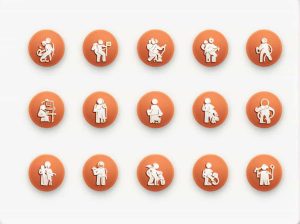The vertebrate heart is a vital organ responsible for pumping blood throughout the body supplying oxygen and nutrients to tissues. However when studying its evolutionary relationships an important question arises: Is the vertebrate heart homologous or analogous?
To answer this we must explore the concepts of homology and analogy in evolutionary biology and examine how the heart has evolved in different vertebrate groups.
Understanding Homology and Analogy
What Is Homology?
A homologous structure is one that is inherited from a common ancestor. Homologous structures may serve different functions but share a similar fundamental structure and evolutionary origin.
For example:
- The forelimbs of mammals birds and reptiles are homologous even though they are adapted for flying swimming or walking.
What Is Analogy?
An analogous structure arises due to convergent evolution where different species develop similar features to perform the same function but these features do not share a common ancestor.
For example:
- The wings of birds and insects are analogous. They serve the same purpose (flight) but evolved independently.
The Evolutionary Origins of the Vertebrate Heart
Similarities in Vertebrate Hearts
All vertebrates from fish to mammals possess a heart that circulates blood through the body. However the structure of the heart varies among different vertebrate groups:
- Fish: A two-chambered heart (one atrium one ventricle).
- Amphibians and most reptiles: A three-chambered heart (two atria one ventricle).
- Birds and mammals: A four-chambered heart (two atria two ventricles).
Despite these structural differences all vertebrate hearts develop from a common embryonic structure known as the cardiogenic mesoderm supporting the idea of homology.
Why the Vertebrate Heart Is Homologous
-
Shared Developmental Pathways
- The vertebrate heart forms from the same embryonic tissue across species.
- Similar genes such as NKX2-5 (a key cardiac gene) are involved in heart development across all vertebrates.
-
Common Ancestry
- The first vertebrates early jawless fish had a primitive heart.
- Over millions of years natural selection modified the heart’s structure but its fundamental origin remains the same.
-
Gradual Evolutionary Changes
- The heart evolved incrementally adapting to the increasing metabolic demands of different vertebrate groups.
- Each stage (two-chambered to four-chambered) represents a modification of the ancestral heart rather than a completely new independent structure.
Are There Any Analogous Aspects?
While the vertebrate heart itself is homologous certain specific adaptations could be considered analogous due to convergent evolution.
For example:
- The four-chambered hearts of birds and mammals evolved independently as their last common ancestor had a three-chambered heart.
- However both birds and mammals needed efficient oxygenation for their high metabolic rates leading to the development of a four-chambered heart through convergent evolution.
The vertebrate heart is primarily homologous as it originated from a shared common ancestor and retains fundamental developmental and genetic similarities across species. However certain structural adaptations such as the four-chambered heart in birds and mammals evolved independently showing analogous characteristics in some cases.
Understanding these relationships helps us appreciate the complexity of evolutionary biology and how organisms adapt to their environments while retaining ancestral traits.



